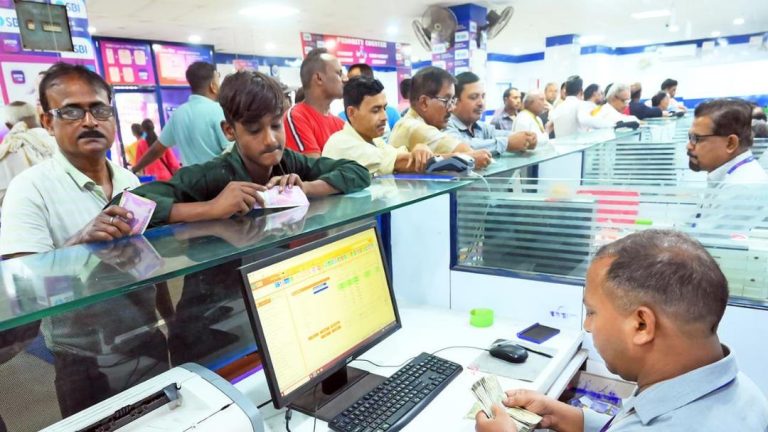
RBI’s government securities holdings jump to 14.2%: SBI report
The Reserve Bank of India’s (RBI) share in government securities has witnessed a significant surge, reaching 14.2% in June 2025, up from 11.9% last year, according to a recent report by the State Bank of India (SBI). This increase in the RBI’s holdings of government securities is a notable development, particularly in the context of the country’s fiscal landscape. The report highlights a shift in the ownership pattern of government securities, with banks reducing their exposure and insurance companies maintaining a stable holding.
The RBI’s increased participation in the government securities market can be attributed to its efforts to manage liquidity and regulate bond yields. With heavy central and state government borrowings on the horizon, the RBI’s intervention is crucial to prevent a sharp rise in bond yields. The government’s borrowing program is expected to put upward pressure on yields, which could have a ripple effect on the entire debt market. By increasing its holdings of government securities, the RBI aims to absorb some of the excess supply and maintain stability in the market.
The reduction in banks’ exposure to government securities is another significant aspect of the report. Banks have traditionally been major players in the government securities market, but their decreasing participation could be a result of various factors, including changing regulatory requirements, risk management strategies, and shifting investment preferences. The decline in banks’ holdings may also be a reflection of their increasing focus on lending and credit growth, as the economy continues to recover from the pandemic-induced slowdown.
On the other hand, insurance companies have maintained a stable holding in government securities, which is not surprising given their long-term investment horizon and risk-averse approach. Insurance companies typically invest in government securities to match their long-term liabilities and generate stable returns. The stability in their holdings suggests that they remain committed to their investment strategy, despite the changing market dynamics.
The RBI’s foreign exchange interventions have also had a significant impact on the liquidity situation in the market. The central bank’s efforts to manage the exchange rate and maintain foreign exchange reserves have resulted in a tightening of liquidity, which has prompted the RBI to undertake fresh Open Market Operations (OMO) moves. OMOs involve the purchase or sale of government securities by the RBI to regulate liquidity and influence bond yields. The RBI’s OMO moves are crucial in maintaining stability in the debt market and ensuring that the government’s borrowing program is executed smoothly.
The implications of the RBI’s increased holdings of government securities and the subsequent reduction in banks’ exposure are far-reaching. With bond yields likely to remain rangebound due to the RBI’s interventions, the debt market may experience a period of stability, which could be beneficial for investors and borrowers alike. However, the heavy borrowing program of the central and state governments may still pose challenges for the market, and the RBI’s ability to manage liquidity and regulate bond yields will be crucial in navigating these challenges.
In conclusion, the SBI report highlights the significant increase in the RBI’s share of government securities, which is a notable development in the country’s fiscal landscape. The reduction in banks’ exposure and the stability in insurance holdings are also important aspects of the report. As the government’s borrowing program gains momentum, the RBI’s interventions will be critical in maintaining stability in the debt market. With the RBI’s forex interventions and OMO moves, the market is likely to remain rangebound, providing a stable environment for investors and borrowers.
The RBI’s role in managing the debt market and regulating bond yields will continue to be crucial, particularly in the face of heavy government borrowings. The central bank’s ability to balance its monetary policy objectives with the government’s fiscal requirements will be essential in maintaining stability in the economy. As the market navigates these challenges, the RBI’s actions will be closely watched, and its decisions will have a significant impact on the overall direction of the economy.





